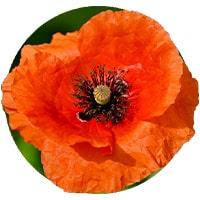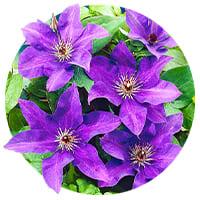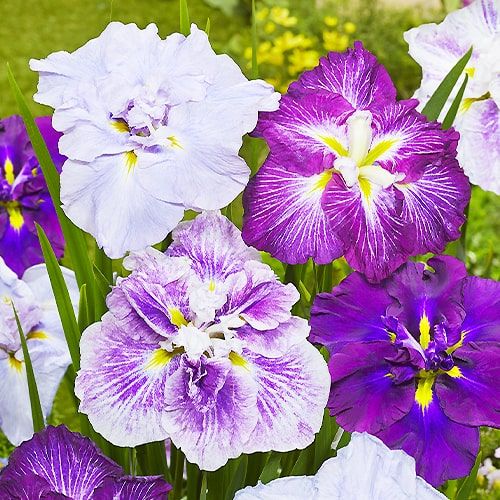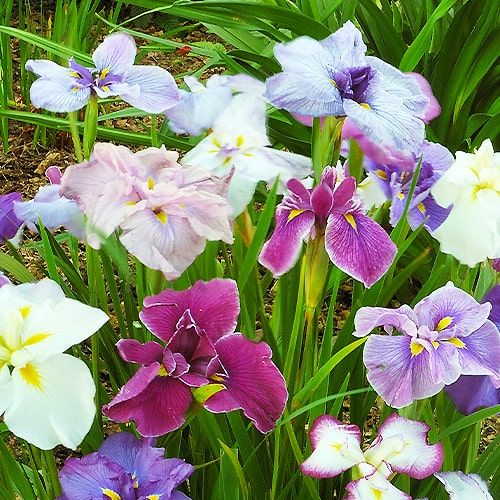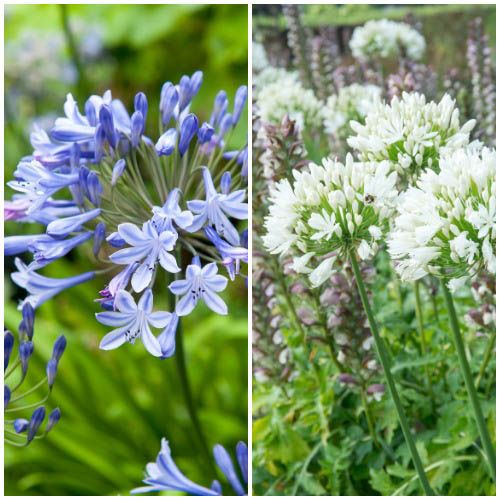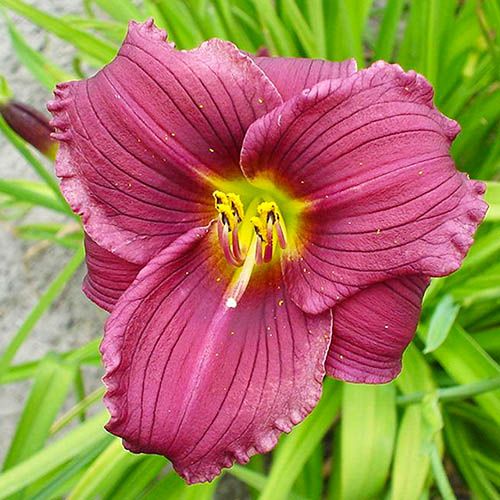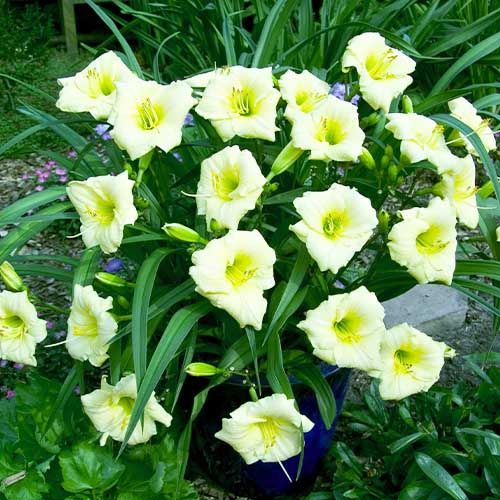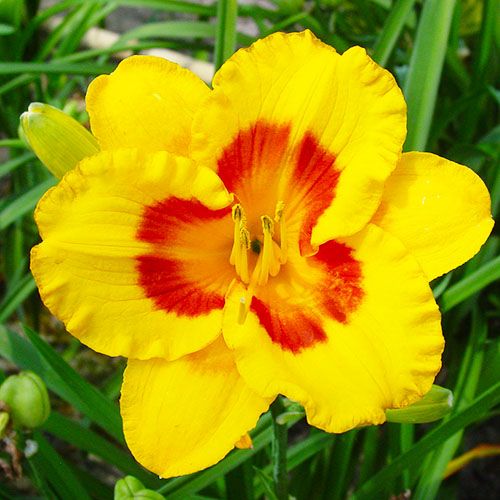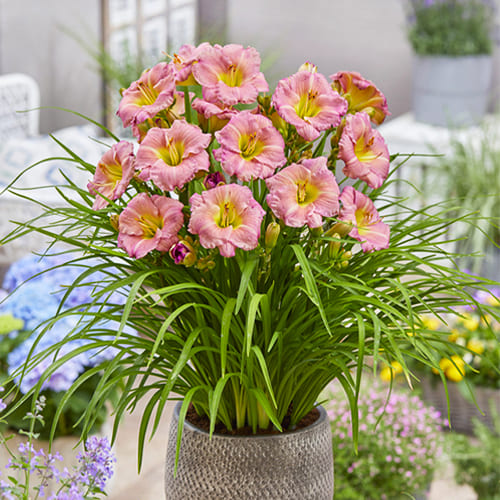
Perennial Plants and Flowers
Bare-Root Perennials and Potted Plants
- -40%

- -40%

- -30%Astilbe Perfect Collection (10 plants)Sku: 120515310 bare-root plants in pkgIn stock€13,95 €19,93
- -40%
- -30%Phlox (paniculata) Perfect Collection (10 plants)Sku: 1205719110 bare-root plants in pkgIn stock€18,62 €26,60
- -40%Iris Ensata (Japanese Iris) Breeders CollectionSku: 12033135 bare-root plants in pkgIn stock€11,97 €19,95
- -40%Iris Siberica (Siberian) Breeders CollectionSku: 12032655 bare-root plants in pkgIn stock€7,96 €13,27
- -40%
- -30%
- -30%Hemerocallis (Daylily) EveryDaylily BronzeSku: 12020151 bare-root plant in pkgIn stock€3,18 €4,55
- -30%Hemerocallis (Daylily) Spacecoast Freaky TikiSku: 12020841 bare-root plant in pkgIn stock€2,76 €3,95
- -30%
- -30%Hemerocallis (Daylily) EveryDaylily Pink CreamSku: 12021011 bare-root plant in pkgIn stock€3,18 €4,55
- -30%
- -30%
- -30%
- -30%
- -30%Iris Ensata (Japanese Iris) Dinner Plate CupcakeSku: 12030151 bare-root plant in pkgIn stock€4,16 €5,95
- -30%Iris Ensata (Japanese Iris) Dinner Plate Jell-OSku: 12030111 bare-root plant in pkgIn stock€4,16 €5,95
- -30%Iris Ensata (Japanese Iris) Dinner Plate TiramisuSku: 12030061 bare-root plant in pkgIn stock€4,16 €5,95
- -30%Iris Ensata (Japanese Iris) HarlequinesqueSku: 12030171 bare-root plant in pkgIn stock€3,88 €5,55
Last Reviews
Big and such good quality! I planted my first perennials in Sweden and the last shipment last year in the Netherlands and in both countries the neighbors were jealous and asked about the secret of the beautiful flowers.
I got everything without a shortage.
Thxs, Liza
What is a perennial and why you need it in your garden?
Perennial plants are the type of plants that, unlike annual or biennial flowers, live several years. Trees, bushes, and other thickets are considered to be perennials since they definitely live more than a year. However, the word “perennial” is often used to define other kinds of plants. As such, the term commonly refers to the vegetation that has no woody trunks or consists of very few woody stems. What is great about a perennial is that such a plant can remain sleeping for quite a long time, which cannot be said about annuals and biennials. And at the end of the dormancy period, this plant can easily continue growing and reproducing. There are several types of perennials, and they are classified depending on the kind of their stems and the way they adapt to weather conditions. Some of them live short (3-5 years) and some live long. There are plants that prefer only warm and sunny places and there are such that can cope even with cold winters. So, how many types of them can one categorize? There are hardy, herbaceous, semi-woody, woody, and tender perennials. In what ways are they different? What is so unique about them? Keep reading and you will find the answers below.
Why Are Perennial Flowers so Popular?
Perennial flowers have great fame all over the world, and their popularity is well-deserved. First, these plants look immensely beautiful. Any kind of such flowers will become a good decoration for any garden. There are even gardens that consist of perennials only, and they have a stunning look so that the owners enjoy perfect views every day. Such gardens may comprise tender flowers solely, hardy perennials only, or a mix of them. Apart from a beautiful appearance, a perennial plant gives a multitude of great benefits to the field of gardening. For example, these flowers simply do not let weeds grow on their territory. Thus, people often use perennials to make their gardens weeds-free, which results in a better and more pleasant look. Moreover, their deep roots help to save soil from erosion. What is also great, they can retain nitrogen and prevent it from contaminating soil. Their help is enormous since contamination leads to disastrous consequences for both the environment and people’s health.
Hardy Plants Are a Perfect Solution for Lazy Gardeners
Hardy perennial plants are resistible and can withstand various harsh conditions. Very often, people purchase this type of perennials when they do not want to spend much time over their garden and do not wish to worry whether their flower beds will die because of bad weather. Hardy perennial vegetation includes Clematis, Peony, Daylily, etc. While some most of them fall asleep when it is frosty, some remain active regardless of the season. The most common and beautiful evergreen flowering plants are Rhododendron, Dwarf Yucca, Maney Juniper, Castle Spire Holly, etc. The opposite of hardy plants are tender perennial flowering plants.
Tender flowering perennials will go for demanding gardens
Tender flowers are the best perennial plants for romantic and delicate gardens. If you belong to the kind of individuals that devote a great part of their free time to gardening, tender flowering perennials will become a great choice. However, if you live in an area with harsh winter conditions, you will need to thoroughly overwinter such flowers. Tender perennial garden plants comprise a multitude of flowers, such as Hibiscus, Colocasia, Cordyline, Cow Parsnip, and many others. They vary in size, appearance, and color but require strict and proper care. Therefore, tender plants are the best perennial flowers for garden decoration in mild climatic zones.
Other types of perennials for sale
Herbaceous Flowers
Herbaceous perennials live for a certain period and then, when their flowering season finishes, their foliage falls off. However, the roots remain alive deep in the soil, and, as soon as the next season starts, the foliage will be seen to a human’s eye again. The most common example is the Tulip.
Semi-Woody Perennials
These plants are shrubs with a woody base. They have multiple stems and thin branches with leaves. They may be evergreen or seasonal, and some of them may live in sunny and dry conditions, while others require a shadowy wet environment. As such, Kudzu and Wisteria belong to semi-woody perennials for sale.
Woody Plants
Technically, woody perennials are trees and bushes. If you plant them in a correct and appropriate climatic zone, they do not die each season, however, some of them may have periods of dormancy. This type of perennial plants includes Maple, Pine, and others.
Conclusion
As you can see, all garden perennials have beautiful appearance and perform various useful functions. They can make a great contribution to any garden. You can choose various types of perennials depending on your climatic zone and on the kinds of appearance you prefer. If you wish to decorate your garden with pretty and stylish plants, you should definitely consider purchasing these plants. They will brighten your mood by bringing joyful views into your life!
Frequently asked questions about Spring Flowering Perennial Plants and Flowers
What are perennials and perennial flowers?
Perennials are plants that emerge, grow and flower every year. They are also described as herbaceous plants. Their stems are not woody like those of shrubs and trees. Many perennials are evergreen, but most are not. Their foliage dies back in the autumn while their roots survive underground so that the plant wakes up again every spring.
The most popular perennial plants are:
When to Plant Perennials?
Perennials can be ordered from early spring until autumn. You can plant perennials purchased in pots in a garden at any time of year as long as temperatures are above freezing but the best times to plant them in a border, are in the spring or autumn.
Bare root perennials can be purchased in spring and ideally should be planted by the end of May to allow them to develop roots before the summer.
What is the difference between Annuals and Perennials?
- Perennials are plants that emerge, grow and flower every year.
- Annuals are plants that germinate, flower, set seed, and die all in one season.
How to Plant Perennials in the Garden?
Use the following six steps to plant perennials:
- Make a generously sized planting hole
- Remove the perennial from its cultivation pot or bag
- Plant it in the hole so that the top of the plant is at the same level of the soil
- Plant them at the right distance apart
- Fill the hole with soil and tamp down firmly all the way around the plant
- Then give the plant plenty of water













